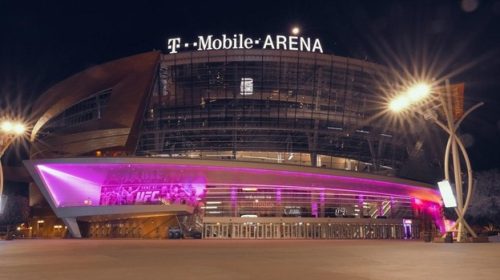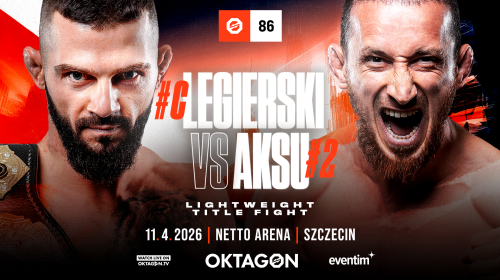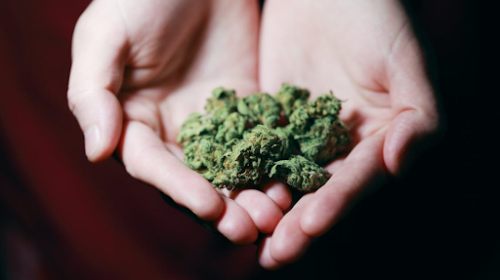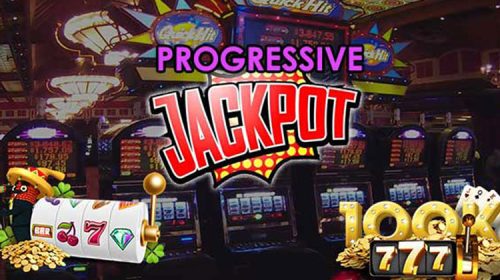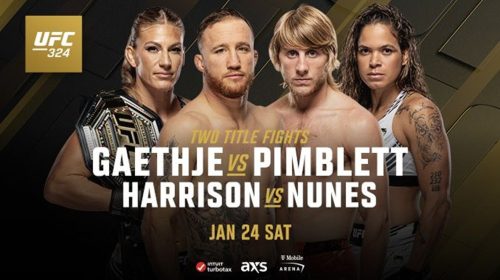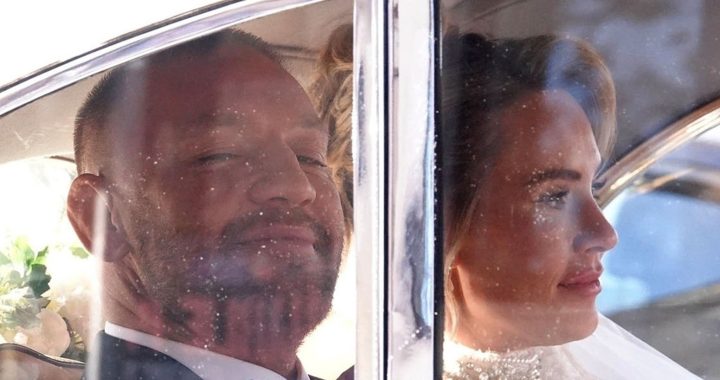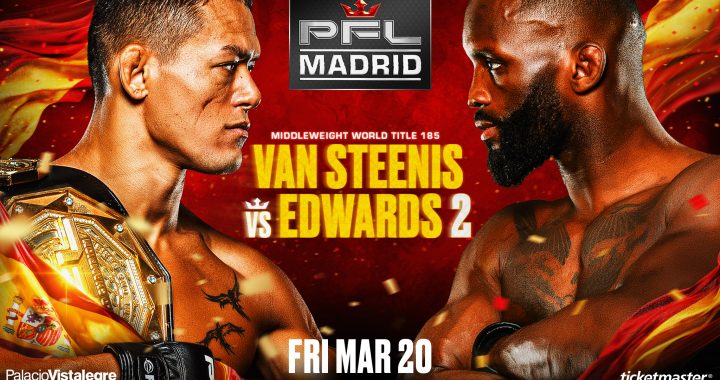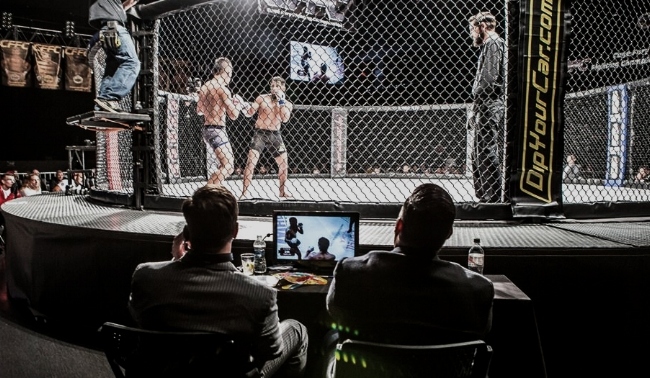
PhotoCred: CFFC
Hottest seat in the house: The ever-criticized MMA judge
One of the most famous quotes in all of MMA, if not the most famous quote, is “Never leave it in the hands of the judges.”
It’s a quote so synonymous with the sport that UFC President Dana White put it up on the wall at the old Ultimate Fighter gym. Which isn’t incredibly surprising when we understand that he’s essentially the one that popularized it.
A common problem people have had with that quote on top of its clear meaning is that judging, and decisions are a part of the sport and what helps make it a sport. A decision literally the most historically common outcome that a fight can have. Fighters should be able to leave their fates up to the judges rather than feeling pressured into having to change their whole gameplans or fighting styles because of created public perceptions – whether right or wrong.
The implications of the quote are that of the judges simply being untrustworthy to do their job properly. However, shouldn’t they be?
Everyone makes mistakes here and there. No one is perfect no matter what their area of expertise is. But when it comes to MMA judging in particular, no one is vilified more for screwing up than a judge and praised less for being accurate.
Without judging and decisions, we’re taking away the sporting aspect of MMA which almost killed it before it got going during its infant years where they didn’t exist.
The MMA judging chair is quite possibly the most consistently hottest seat across all sports. It’s easy for those judging the judges to forget that those handing in their scorecards were selected to do their job for a reason and had to train to achieve it.
Lengthy training courses need to be taken to become a judge in MMA and the process is a whole lot more rigorous than many surely assume. There’s a wealth of knowledge to be absorbed in such a diverse activity.
According to retired former UFC title challenger Frank Trigg, who now referees, commentates, and judges around the world, it took him a year to get fully licensed. He said for most it takes about two years but in his case, he wanted to be done as quickly as possible and it still took 365 days at the least.
While they’re often the magnets of vile community backlash, that surely plays a part in why we don’t hear too much from them and their sides of things publicly. Because of that, it got us at MyMMANews curious.
What would judges say are the common fan misconceptions about judging? What is the hardest part about judging? Do they ever feel any sort of pressure as a judge? Why do they judge in the first place?
Well, we reached out to several of MMA’s most notable judges and asked all of them the same four questions. Those who ended up responding were Dave Hagen, Ben Cartlidge, and David Lethaby.

For judge Hagen, his experience dates back as far as 2006 according to MMADecisions.com (source for the experience of all three). Thus, making him the most experienced of the trio as far as longevity goes. Though as will be the case with all three, that time span isn’t including their work done on the regional scene and outside of major shows. Hagen has also done work in MMA as a referee and is the referee for every Submission Underground grappling event (as is pictured above).
“The criteria,” Hagen stated in response to question one, “Even the commentators have no clue about the criteria of judging and the order of precedence. I would truly hope coaches and fighters take a judging and reffing course, so they know what we act on.”
One of the more generally agreed upon frustrations about MMA in its current landscape is the fact that state by state athletic commissions still use both the old version of the unified rules of MMA as well as the new. Meaning, multiple criteria and rulesets, which therefore can more easily lead to misconceptions and confusion among the community.
Even in Nevada, they use a hybrid of sorts which makes things even trickier on a broad scale. All three of these variations and their definitions can be read in their highlighted links.
“The hardest part [of judging] is sometimes serving a loss to a person who tries so hard and barely lost,” he said, “Joanna [Jedrzejczyk] vs. Weili [Zhang] is a classic example. Both deserve to win. Only one gets the 10 per round though.
“10-10s are always a possibility. Though rare. It’s first judged on damage or effectiveness of grappling and striking. If no damage is greater, we go to aggression … who tried more to finish the fight. Then octagon control. All would have to be equal to give a 10-10. Each being a tier of judgment.”
While Hagen himself was not a judge for the epic bout that was Weili Zhang’s first career UFC title defense opposite Joanna Jedrzejczyk, he did judge at the event that the fight took place on in UFC 248.
Of the bouts that he was in charge of, two went to decision. He scored in favor of the victors Alex Oliveira and Mark O. Madsen who both received 29-28 scorecards.
Across UFC, Bellator, WEC, and WSOF dating back to 2006 and judging every year since, Hagen has only been the odd man out for split decisions in 8 out of 133 fights.
“More as a judge than as a ref,” Hagen said in regards to if he feels any pressure, “100 percent of the time I piss off 50 percent of the audience and fans.
“I like judging because I get to stay active in the sport and with the evolving knowledge and training I do … I feel like I give a fair shake to the fighters who put it all on the line.”
Judge Ben Cartlidge truly loves what he does and the sport that it revolves around. In terms of judges and referees in MMA, he’s arguably been one of the most accessible for discussion. But what is the one thing he isn’t too fond of thanks to his passion? The fact that his travels lead to plenty of time away from his beloved wife and precious pups. Their support means the world to him.
In regard to what the often-critical fans may be seeing incorrectly from his viewpoint, Cartlidge is on the same line of thought as Hagen when it comes to what it actually is that’s being scored in a fight.
“There’s quite a few [misconceptions], to be honest,” Cartlidge began, “The application of effective aggressiveness/fighting area control are pretty common; being as they’re secondary/tertiary criteria which you only use if effective striking and or grappling are completely even. Also interpreting what constitutes ‘effective grappling’, especially since the ABC revisions to the judging criteria. Judging is in a better position than it’s ever been in the history of the sport, but it doesn’t stop things like this happening. But that’s why it’s good that people learn.”
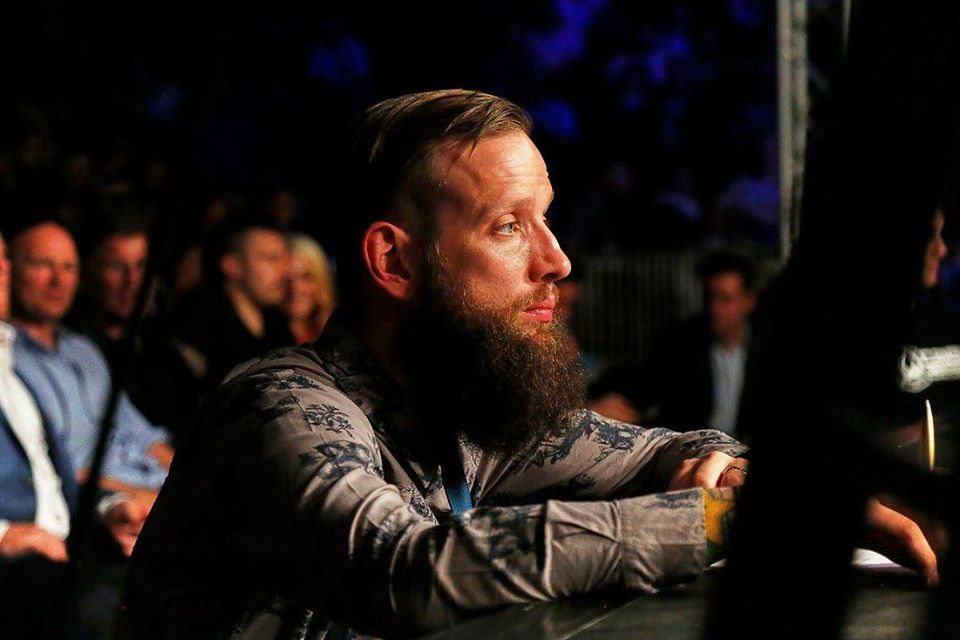
In Cartlidge’s time as a judge, he has been extremely busy working big promotions since 2013 with the likes of UFC, Bellator, KSW, and Cage Warriors. His 358 fights scored is the fourth busiest among judges in all of MMA. Out of those 358, he’s been the minority in split decisions in 22 of them.
“You’re aware when someone has a following but honestly if you feel any pressure about which way to go based on that you either shouldn’t be judging, or you haven’t been doing it for long enough,” he expressed, “If you’ve cut your teeth on the regional scene where you’ve been sitting close to family members and over-emotional types in venues that serve cheap liquor, who you know aren’t going to understand the decision, then you’re doing the right thing in terms of preparation. You need to have enough sports hall and leisure center miles on the clock, it’s essential.
“When it comes to judging after you’ve put your hours in, you don’t even think about it really, it’s red corner vs blue corner, every single time.”
Despite being so often grouped into the occupation’s negative light and under such heavy fire that the MMA community can provide, from the outside looking in, it feels like it would be an extremely difficult thing to want to do.
Well, that’s until you have Cartlidge break down exactly why he does what he does. Then you get a bit more of a sense as to what this sport and all of its many different aspects and factors are all about.
“It’s the best job in the world,” he explained, “There’s really nothing like it. Like in the middle of all that chaos, the laser focus needed to pick apart exactly what is happening and cross-reference it to a set of points is an amazing mental process. There’s nothing else like it. It’s like the rest of the world stops, and there’s nothing apart from fighter A and fighter B for however long they’ve got. It’s pretty cerebral.
“It’s hard to describe how it feels doing it, it’s like a different part of my brain switches on somehow, a part of my brain I’ve yet to find anything else activates, not even no death clears or ‘Ghouls N Ghosts’. I’ve put a decade of my life into being the best I can be at this, I’m not about to stop any time soon.”
A big thing in every sport is the stats. In MMA, that’s no different and there are plenty of super interesting numbers to look at and choose from. Ultimately, stats come from other stats and that’s when we get down to calculating strike totals, takedown attempts, all of those fun in-cage actions.
It’s quite easy to look at numbers and weigh things heavily because of that. But in something like fighting, it’s a bit different than just scoring a touchdown or dunking a basketball.
“I would say the importance of statistics is a big one at the moment,” David Lethaby said in regard to fan misconceptions, “For example, something like overall strike totals in a fight. Fights are obviously scored in separate rounds so an overall total of all rounds being used as evidence of who won can sometimes be misleading. A fighter can win two rounds by a few strikes and lose the last by a more significant amount, it doesn’t mean he doesn’t deserve a 29-28 according to the criteria. We give the cards in at the end of each round, we don’t fill them out overall. I’ve seen other stats like advancing used as well that really don’t mean a great deal 99 times out of 100 when judging. Our first line of criteria is looking at effective striking and grappling, only if those two are considered equal are we taking other things into account, and that is obviously extremely rare in a five-minute round.
“Of course, stats-wise two strikes are never really equal too, ‘significant’ is a very broad term. We are giving more weight to those with more impact, the same with sub attempts. There is a big difference between a loose arm-in guillotine and an armbar attempt that hyperextends someone’s arm, but the stats say one sub attempt each…”
Like Cartlidge, David Lethaby’s experience has also seen him primarily honing his craft working UFC, Bellator, KSW, and Cage Warriors events. In regard to his level of activity, he’s the ninth most active judge having judged 253 fights dating back to 2013. Only 8 of those seeing him as the split decision creator.
One of the things that make judging such an interesting task is how it’s done and how a fight is most commonly viewed. Most people watch from the comfort of their homes or perhaps a bar – on TV with the best view and angles possible. Sure, judges have phenomenal views too as they’re right next to all the action. But it’s quite different.
Being that close provides a distinct take on the action and it doesn’t always come through in a relatable fashion. Even getting as close as you can in attendance as a fan and you can see it for yourself. This is just another one of the many facets that add to the overall intricacy of fight scoring.
“To be honest with you sometimes the abuse can be tough (obviously not as tough as actually fighting so I’m not complaining!),” Lethaby said of judgings biggest difficulties, “Most of us take the job extremely seriously. We are very aware that people’s livelihoods are on the line. The problem is you can judge 500 rounds in a row that everyone agrees with. Round 501 maybe you had a bad angle in your chair for a couple of significant moments in the round (you can’t score what you can’t see obviously, that’s why we have three judges at different angles). Some shows have screens too but generally, you are relying on your eyes.
“I think if people got a chance to sit in a chair cage-side they would see how different it is. Also, certain things sometimes just don’t translate on TV. A recent example I’ve been seeing is calf kicks. Live cage-side they can look really effective, you get the sense of impact, and you can often see the results. The angles on TV sometimes miss these and the impact looks a lot less. Likewise, maybe you were the only guy in the building that saw how effective that body shot was because it was right in front of you, the TV angle and other judges just didn’t see it. Marc Goddard runs a great course on reffing and judging, he talks about the scoring in a particular famous fight and how judges different scores could be attributed to some of the significant action happening in particular positions in the cage, it’s really interesting. Anyway, back to the question.
“So, you put in round 501 it differs to others and now that’s all anybody wants to talk about,” he continued, “Suddenly you are accused of taking bribes, or told never to judge again, people threatening you with violence. It’s crazy. Believe me, if judges watch a round back on TV and feel like we got it wrong, it lives with us. Certain abuse you can laugh off but the assertion that you don’t care or are wilfully favoring people is offensive when you put so much into it. It’s the same thing with refs abuse wise, although due to visibility they get it much worse!
“I listened to the executive director of the (California State Athletic Commission) Andy Foster on the Ariel [Helwani] show and he put it well. He basically said even the most experienced judges make mistakes but when you use them the odds of those mistakes are much lower. Nobody is above criticism, I get it, but let’s try and keep it in context.”
Similarly to Cartlidge, Lethaby repeats the sentiment of not feeling any pressure actually scoring. Because scoring by itself is pressure enough all in its own right. It doesn’t matter how many people are watching, only three are potentially deciding the final verdict of who comes out the winner or a loser in a sport where one win or loss can make or break one’s career trajectory.
In Lethaby’s case, he may have never been a fighter himself, but he trained and got into the sport the same way that many do in one form or another.
“I don’t feel pressure when actually scoring,” he started, “You have to block everything out and have complete concentration. That’s another thing when people talk about judges, chances are other than the ref nobody in the world is watching it like we are. If you are at home chilling out, you’ve got Twitter on your phone open maybe, you’re talking to friends listening to commentary. Like maybe you’ve had a couple beers, commentators themselves even are obviously concentrating on commentating. We are completely dialed in. However, like I said earlier you know what is at stake. You see more than most what these guys have to go through so you want to do your best each and every time, whether it’s in a small hall at home or in front of 70,000 on the other side of the world.
“I started training in MMA as a teenager and I just fell in love with the sport. The coach at our gym was a UK fighter called Jeremy Bailey. I went to a few of his fights and really enjoyed the live atmosphere. At that point, I was studying media in college so I started to cover fights. I ended up writing for a few websites and a magazine over here and did a bit of commentary on the scene.
“Around 10 years ago a local show asked for those interested in being officials,” Lethaby recollected, “Promoter knew me from the press scene and gave me a shot. Judged and loved it. Just built up ever since. I feel extremely fortunate to have traveled to a huge amount of places and its an absolute honor when you are trusted to work with some of the best in the world. You build up a good camaraderie with colleagues too. Other judges like Ben Cartlidge and Mark Collet, Paul Sutherland and refs like Marc Goddard, Leon Roberts, Rich Mitchell, and others, you are seeing these guys more than some members of your family. When you all have the same goal of doing the absolute best for the athletes you feel a real sense of community. Those guys are true friends, it’s tough to imagine weekends without them!”
It comes with any position in any sport, really. MMA judge being no different.
If it’s under a microscope on a grand stage, those that the shows are being put on for can often forget the ones they may be spewing hate towards are in fact humans too just like them. Of course, everyone can have their opinions and criticism always has its place.
But if there is a hotter seat out there in sports than that of an MMA judge’s, you’ll have to search far and wide for it.




